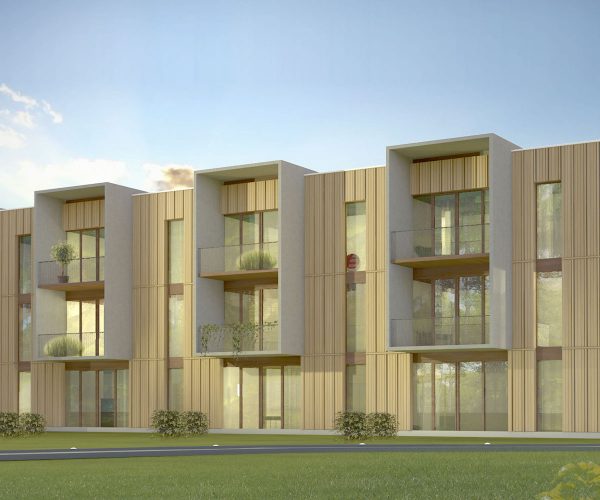Project Information
Matteo Thun & Partners, Mailand
Dipl. Arch. (FH) Claudia Greussing
DI Gerald Schnell
DI Michael Laubender
DI (FH) Juliane Wiljotti
Client
B&O Parkgelände GmbH & Co KG, Bayern
Competition
2012
Projektphasen
City of Wood, Bad Aibling
B&O wooden multi-storey car park, Bad Aibling
B&O Villen, Bad Aibling
B&O Mehrfamilienhaus, Bad Aibling
Rights
Text Matteo Thun & Partners, Architekten Hermann Kaufmann
Translation Bronwen Rolls
Text Matteo Thun & Partners, Architekten Hermann Kaufmann
City of Wood, Bad Aibling
1. Platz (Städtebau), 1. Platz (Reihenhaus), 3. Platz (Mehrgeschossiger Wohnbau)
Park living, sustainable construction, technical innovation, social mix through a variety of typologies.
Functional amalgamation:
Living, working, hotel, creation of local identity through framed views and a strengthened homely centre.
Urban Design:
Clear definition of the rooms, undulating parkland besides the river.
Structure:
Completion of the existing building structure – garden city with focal point and atrium housed in the flood plain – boundary lines to the east.
Centre:
Formation of the central village green, the definition of the space with two poles formed by the eight-storey landmarks.
Orientation:
Optimised orientation of the apartments to the south and southwest – large terraces overlooking the mountains or the meadowy countryside.
Multi-storey timber constructions in the City of Wood presents themselves as a forward-looking solutions that comply, not only with the classic requirements such as statics, sound insulation and fire protection, but they also combine an intelligent building shell with the use of ecological building and insulation materials. Both are based on renewable raw materials and both have building services, and an energy supply concept, that utilises renewable energy sources. The outstanding quality of the location is the view of the mountains and the lush green surroundings. The top floor offers a higher residential value due to its expansive sun terrace. The floor plans are optimised for function and cost.
The exterior wall system is modular and consists of three levels; a statically relevant support level, which is designed as a timber latch element or as a solid timber element, depending on requirements. Coupled with the support level is an insulating layer of box girders, which is completely filled with ecological insulation cellulose and in which all fittings such as doors, windows and shading are already pre-assembled in the factory. In addition, the insulating layer serves as a substructure for the third level, the timber facade. Between the three levels of the modular wall structure, in each case board materials are introduced which, in addition to their original stiffening effect, take on very specific building physics functions.
For the ceilings, solid cross-laminated timber elements are used in their natural appearance adding visual quality. These multi-layer glued ceiling elements allow large spans, contribute to a pleasant indoor climate, and produce a homely felling in the living spaces.
The budget allow for an extremely stringent and constructively clear concept. The offered design includes the typical requirements of affordable housing and it should remain possible to retrofit accessibility. All apartments are accessed via a staircase, which can be retrofitted with a lift. The cellar is replaced by storerooms, which are stacked on the north side and executed as precast concrete elements.
A special design concept enables a new approach to the topic of prefabricated timber construction. The complex parts, ie bathroom and the bath drainage, are prefabricated as a room fixture. This allows a complete installation of plumbing, heating and electrical installations in the factory, as well as the installation of almost all doors. This makes it possible to eliminate the weak point in sanitary fixtures in timber construction, such as sealing. This constructive idea enables a fast construction phase as well as a maximisation of the execution qualities.





